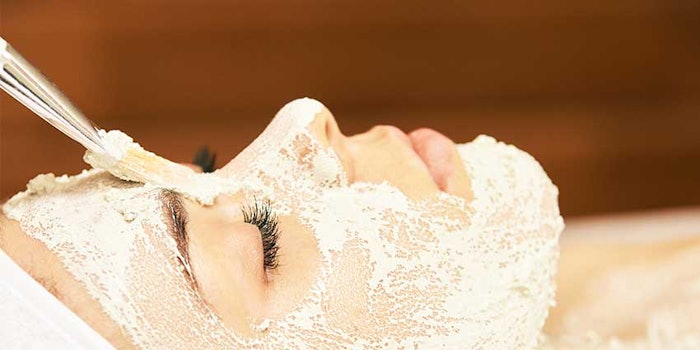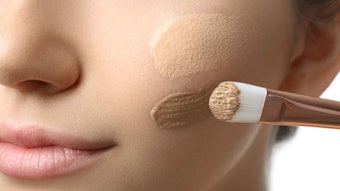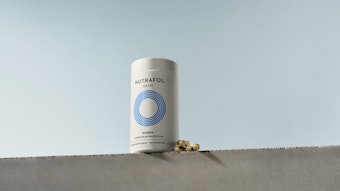
Keratinocyte deviations in proliferation, adhesion and differentiation obstruct the infundibulum and the sebaceous duct, paving the way for excessive sebum secretion, bacterial overgrowth such as Propionibacterium acnes (P. acnes), and inflammatory response due to release of bacterial and cellular products, i.e. sebum and keratin. Keratolytic agents are believed to function by relaxing the cohesiveness of the stratum corneum (SC). This involves the disintegration of desmosomes and hemidesmosomes, which link keratinocytes and bind them to the extracellular matrix (ECM), respectively. Therefore, keratolytic agents modulate and correct abnormal follicular keratinization.
Benzoyl Peroxide
Benzoyl peroxide (BPO), a mainstay treatment of mild to moderate acne, has antimicrobial, anti-inflammatory and anticomedogenic effects. Its lipophilicity allows it to enter and accumulate in the lipid-rich pilosebaceous units and subcutaneous fat. Since the pathogenesis of acne begins in the pilosebaceous unit, this may explain the efficacy of BPO.
An eight-week study was conducted where 2.5% BPO was compared with 5% BPO, 10% BPO and its vehicle. BPO at 2.5% significantly decreased inflammatory lesions, i.e. papules and pustules, compared with the vehicle alone; in addition, it showed equivalent efficacy to 5% and 10% BPO while producing fewer side effects than 10% BPO. The only significant adverse effect in this study was skin peeling.1
In addition to peeling, adverse effects of BPO can include dryness, burning and redness of skin, and contact allergy occurs in 1–2% of consumers. To that end, products including BPO should advise consumers on the label to avoid excessive UV radiation, which can exacerbate irritation.
Combination therapy of BPO with topical antibiotics may be more effective than BPO alone in treating mild to severe acne. Both clindamycin/BPO and erythromycin/BPO formulations have shown superior efficacy when compared with BPO or antibiotic monotherapy.2 Topical antibiotics aid BPO in treating acne by exerting an anti-inflammatory action as well as an antimicrobial action against P. acnes.
Retinoids: Tretinoin, Isotretinoin, Tazarotene and Adapalene
Topical retinoids encompass a group of powerful, comedolytic, anti-comedogenic and anti-inflammatory agents. They are powerful keratolytics, targeting both primary and secondary prevention of comedones. Mechanisms of action include: normalization of epidermal proliferation and differentiation, inhibition of neutrophil chemotaxis, expression of the toll-like receptors (TLRs) involved in immunomodulation, and anti-inflammatory effects via inhibition of prostaglandins, leukotrienes and interferon-gamma release.
With these treatments, local skin irritation and acne exacerbation, also termed retinoid flare, in some cases have occurred during the first month of retinoid treatment. A large, retrospective, vehicle-controlled study of mild/moderate to severe inflammatory acne demonstrated significant improvements with 0.1% tazarotene gel, 0.1% tazarotene cream, 0.1% adapalene gel and 0.1% tretinoin microsponge treatment. These treatments along with 0.025% tretinoin gel produced a significant improvement in global acne response. Among these, 0.1% tazarotene cream and 0.1% tazarotene gel showed greater improvement than adapalene gel and tretinoin gel. One study showed tazarotene to have the greatest efficacy on overall inflammatory acne severity and global response scales.3
Tretinoin: Tretinoin is an effective comedolytic and anti-comedogenic agent that increases epithelial cell turnover and modulates abnormal keratinization. Topical tretinoin has poor percutaneous absorption, and systemic retinoid levels remain constant despite application. Side effects of treatment with tretinoin include peeling, erythema, dryness, burning and itching. Adverse effects can be reduced by spacing out applications and/or diminishing the frequency and/or concentration of the product. Additionally, tretinoin should not be mixed with BPO (an oxidizing agent), which can result in degradation and deactivation of the tretinoin.
In a large multicenter trial, tretinoin significantly reduced inflammatory and non-inflammatory acne lesions by week 12, compared with a vehicle. Side effects of treatment with tretinoin included eruption, dry skin and exfoliation. Polyolprepolymer-2 (PP-2), which localizes drug molecules in upper skin layers, may diminish adverse cutaneous reactions. A large study demonstrated favorable global assessments with 0.025% tretinoin-PP-2 cream vs. 0.025% tretinoin cream, with no difference in tolerability.4
Recently, a hydrogel containing 1% clindamycin and 0.025% tretinoin was found more efficacious in treating inflammatory and non-inflammatory acne lesions than either agent alone or in a vehicle. These results were confirmed by two large studies; adverse events were similar in frequency and severity to tretinoin alone.5 Furthermore, a 6% BPO cleanser followed by 0.1% tretinoin microsphere gel demonstrated a greater inflammatory lesion reduction than tretinoin monotherapy.6
Isotretinoin: Isotretinoin (Iso) remains a mainstay for severe, recalcitrant, nodulocystic acne, producing dramatic clearing and prolonged remissions. Its efficacy extends beyond the correction of hyperkeratinization to include actions on the sebaceous gland, i.e. decreased size and secretion; anti-comedogenic properties; and the creation of an unfavorable follicular environment for P. acnes.
A cumulative dose of 100–150 mg/kg Iso (see Mg/Kg Dose Response) is recommended during treatment course, with daily dosage ranging from 0.5–1 mg/kg/day. Lower daily doses may be associated with higher relapse rates. Nonetheless, to diminish possible retinoid flare, doses of 0.5 mg/day for the first month may be practical.
A recent trial suggested that intermittent Iso treatment may result in fewer side effects such as mucosal dryness, chapped lips and facial redness for those with moderate acne. Volunteers were treated with 0.5 mg/kg/day of Iso for either: the first 10 days of each month for six months, or daily during the first month and the first 10 days of each month for the next five months. Nevertheless, in severe acne, consistent daily usage (Iso 0.5 mg/kg/day for six months) displayed greater efficacy than intermittent usage patterns.7
Eruptive inflammatory attacks are common during the first month of Iso therapy, typically resolving without scarring. The most commonly reported adverse effects are mucocutaneous and cutaneous changes such as dryness around the lips, eyes, mouth and other mucosal surfaces. Serious side effects include hyperlipidemias, pseudotumor cerebri, hyperostosis, hepatotoxicity, premature epiphyseal closure and inflammatory bowel disease.
A number of ophthalmologic effects have been associated with Iso as well, including poor night vision, reversible corneal opacities and excessive glare. It should also be noted that Iso is a potent teratogen, a drug known to cause birth defects. Many reports of congenital abnormalities have surfaced. One investigation involving 154 pregnancies with fetal exposure to oral Iso resulted in 12 spontaneous abortions and 21 major malformations involving craniofacial, cardiac, thymic and neural structures.8
Tazarotene: Tazarotene, a topical acetylenic retinoid frequently used to treat both psoriasis and acne vulgaris, is hydrolyzed by keratinocyte esterases to tazarotenic acid, its active metabolite. Local side effects typically occur with tazarotene acne treatment, including itching, burning, irritation and erythema. Tazarotene is thought to be the most irritating of the topical retinoids. Half of consumers who use tazarotene for only 2–10 min daily have reported local skin irritation.9 Side effects are most common during the first two weeks of therapy; cream formulations, alternate-day applications and short contact therapy can curtail these side effects.
A randomized, double-blind, vehicle-controlled study demonstrated that 0.05% and 0.1% tazarotene gel significantly decreased total lesions and noninflammatory lesions during treatment with the vehicle alone at 12 weeks. Moreover, 0.1% gel was more efficacious than 0.05% gel, demonstrating a significant decrease in inflammatory acne at 12 weeks.10
A more recent randomized trial comparing 0.1% tazarotene cream to 0.1% adapalene cream demonstrated tazarotene to be more significantly and rapidly effective in reducing comedone count and producing global improvement with no significant difference in side effects at 12 weeks. Furthermore, even short contact application, i.e. less than 5 min, daily for 12 weeks produced a significant reduction in both inflammatory and non-inflammatory acne lesions.9
A multicenter trial found that the regimen of daily 5% BPO/ 1% clindamycin gel followed by 0.1% tazarotene cream was more effective than daily tazarotene monotherapy in reducing comedone count and inflammatory lesion count in patients with > 25 baseline inflammatory lesions, with a similar, if not slightly improved, side effect profile.11
Adapalene: Adapalene has comedolytic, anti-proliferative and anti-inflammatory properties. Furthermore, adapalene may have a dose-dependent response, with 0.3% statistically superior to 0.1% in several different measures of efficacy.12
Adverse effects of treatment with adapalene, including erythema, scaling, dryness, pruritis and burning, occur mainly during the first month of use, decreasing thereafter. Nevertheless, in comparative trials, adapalene has demonstrated a superior tolerability profile to other retinoids.
A meta-analysis of five large randomized trials comprising 900 patients demonstrated equivalent acne reduction, quicker onset of action, significant at one week, and fewer side effects with 0.1% adapalene gel compared with 0.025% tretinoin gel.13 The tolerability profile of adapalene also was significantly better regarding scaling, erythema, dryness, immediate and persistent burning and immediate pruritis.13
In two three-week trials, 0.1% adapalene gel demonstrated better tolerability and less irritation than 0.1% tretinoin cream, 0.05% tretinoin cream, 0.025% tretinoin cream, 0.01% tretinoin gel, 0.025% tretinoin gel and 0.1% tretinoin gel microspheres. In both studies, 0.1% adapalene gel was no more irritating than the petrolatum control.14
A recent study comparing a combination gel containing 0.1% adapalene and 2.5% BPO to a vehicle and individual monotherapies demonstrated combination therapy to have a faster onset of action, significantly greater lesion reduction and no increase in adverse events, compared with monotherapy.15
Azelaic Acid
Azelaic acid, a naturally occurring, saturated C9-dicarboxylic acid, modifies epidermal keratinization, i.e. cytostatic; combats both aerobic and anaerobic bacteria, reducing P. acnes proliferation; and exhibits anti-inflammatory activity. Azelaic acid affects differentiation of human keratinocytes by decreasing synthesis of the keratin filament aggregating protein filaggrin.
Cyanoacrylate skin surface biopsies have demonstrated significant reductions (> 50%) in comedo count after four months of twice-daily 20% azelaic acid treatment, when compared with the vehicle alone. Additionally, comedone reduction was similar in magnitude to that of 0.05% retinoic acid cream.16
A 12-week controlled study comparing 20% azelaic acid treatment, its maximum usage in prescription treatments, with a vehicle demonstrated that azelaic acid significantly improved mild to moderate acne. Azelaic acid treatment decreased inflammatory lesions by 72% and comedones by 55.6%. In addition, 64% of individuals treated with azelaic acid reported good to excellent improvement.17
Azelaic acid has demonstrated inflammatory and non-inflammatory acne reduction in numerous studies, even when compared with tretinoin, benzoyl peroxide, erythromycin and tetracycline.18, 19 One study compared 20% azelaic acid to 0.05% tretinoin over one month to report statistically equivalent comedone and total lesion reduction, and similar overall improvement with azelaic acid. Azelaic acid also demonstrated less erythema, scaling and irritation-induced discontinuation in comparison with tretinoin.17 Another trial comparing 20% azelaic acid with 5.0% BPO demonstrated a more rapid initial effect with BPO but similar results for global response and inflammatory lesion reduction at four months; finally, azelaic acid demonstrated milder, more transient adverse events than BPO.20
Pooling together the results of four trials, Mackrides et al. determined that after six months of treatment, 65–85% of those treated with azelaic acid experienced a > 50% decrease in number of lesions and references as a “good to excellent clinical response.” Transient side effects lasting two to four weeks have been described. These include burning, erythema, dryness, scaling, pruritis and hypopigmentation.
Despite efficacy as a monotherapy, a large randomized trial demonstrated that azelaic acid functions better in combination.18 Subjects were randomized to a 12-week regimen of twice daily 20% azelaic acid cream, either as monotherapy or in combination with one of the following: 4% benzoyl peroxide gel twice daily, 1% clindamycin gel twice daily, 0.025% tretinoin cream once daily, or 3% erythromycin/ 5% benzoyl peroxide gel twice daily. All four regimens improved acne, achieving greater efficacy and patient satisfaction than azelaic acid monotherapy.
In combination with 3% erythro-mycin/5% BPO, 20% azelaic acid produced a marked and relatively expedient decrease in inflammatory lesions. At the end of 12 weeks, reduction in this group was similar to 20% azelaic acid/1% clindamycin, which was the most tolerable of all regimens. In non-inflammatory lesion treatment, however, azelaic acid with 4% BPO and azelaic acid with 0.025% tretinoin were most effective. The azelaic acid plus benzoyl peroxide regimen also achieved the highest patient ratings in overall therapeutic result.18
Salicylic Acid
A core component of many OTC acne treatments, salicylic acid (SA) is a widely available topical keratolytic agent. It has a profound structural effect on the SC, resulting in disruption of intercorneocyte cohesion and subsequent desquamation. Dissolution of intercellular cement is further supported by a novel tape stripping/colorimetric protein assay to evaluate keratolytic efficacy.21
Although local skin irritation, e.g. peeling, at concentrations greater than 2% is common, systemic toxicity is rare. If applied to large areas for prolonged periods of time, salicylate toxicity, toxic inner ear damage and hypersensitivity reactions are plausible.
Two 12-week studies comparing 0.5% and 2% SA pads with placebo pads demonstrated significant efficacy in reducing inflammatory acne, non-inflammatory acne and total lesions, while producing significantly higher proportions of good to excellent overall treatment assessments. In one study, 60% of individuals using 2% and 0.5% SA pads experienced a 75–100% decrease in total lesion count, compared with 2% of patients receiving a placebo.22 In both studies, side effects were minimal and included peeling, itching, burning and redness.
A 12-week study found 2% SA cream superior to 5% BPO cream in reducing closed comedones, open comedones, inflammatory lesions and total lesions.22 A four-week crossover study comparing a 2% SA acne cleanser with a 10% BPO wash demonstrated that only patients treated with the SA cleanser had a significant decrease in comedonal lesions.23 Stated differently, both groups demonstrated significant improvement in comedonal count when treated with SA, whereas BPO treatment either worsened or insignificantly improved comedonal quantity.23
Glycolic Acid
Glycolic acid, a naturally occurring organic acid (α-hydroxy acid), is a component in many cosmetic formulations. Glycolic acid chemical peels may serve as valuable adjuvant therapy in acne. Comedones are removed after only two or three peels, and the procedure may be repeated every two or three weeks. Between peels, low concentrations of glycolic acid may be used as a daily cleanser to prevent re-occlusion of follicles.
A randomized split-face prospective clinical trial comparing glycolic acid to Jessner’s solution (see Jessner’s Solution) demonstrated significant acne improvement in both treatments after three applications. However, glycolic acid produced significantly less exfoliation than Jessner’s solution, suggesting superior tolerability.24 In a similar study comparing glycolic acid with salicylic acid peels, both were equally effective by the second treatment; however, salicylic acid demonstrated greater sustained effectiveness and more favorable tolerability.25 A study examining 35% and 50% glycolic acid peels on Asian patients found significant resolution of comedones, papules and pustules; decreased follicular pore size; improvement in acne scars; and favorable tolerability.26
Conclusion
Taken together, a century of clinical trials and clinical use support the efficacy of keratolytics in acne. While many keratolytics are available by prescription only, OTC keratolytics offer treatment to acne sufferers without a dermatologist. This author suspects that some prescription keratolytic agents will eventually be available in the OTC market should their toxicity profile indicate safety in OTC usage. Therefore, OTC acne formulators should familiarize themselves with all keratolytics, both prescription and OTC.
OTC keratolytics, the most enduring being SA and BPO, have a remarkable safety ratio. It remains to be seen whether some of the newer prescription keratolytic agents will prove to have an equivalent or nearly equivalent safety profile. There unfortunately are no illustrative comparisons between the various keratolytic agents (OTC and prescription) to help acne sufferers choose the most effective treatment for them, particularly for those with mild to moderate acne. With novel in vivo and in vitro keratolytic assays, the formulator finally has the opportunity to obtain efficacy data in as short as a one-day dosing.27 This presents opportunities for refinement and improvement of keratolytic agents.
References
1. OH Mills Jr, et al, Comparing 2.5%, 5%, and 10% benzoyl peroxide on inflammatory acne vulgaris, Int J Dermatol, 25(10) 664–7 (1986)
2. DP Lookingbill et al, Treatment of acne with a combination clindamycin/benzoyl peroxide gel compared with clindamycin gel, benzoyl peroxide gel and vehicle gel: combined results of two double-blind investigations, J Am Acad Dermatol, 37(4) 590–5 (1997) 3. JJ Leyden et al, Topical retinoids in inflammatory acne: a retrospective, investigator-blinded, vehicle-controlled, photographic assessment, Clin Ther, 27(2) 216–24 (2005)
4. AW Lucky et al, Comparative efficacy and safety of two 0.025% tretinoin gels: results from a multicenter double-blind, parallel study, J Am Acad Dermatol, 38(4) S17–23 (1998)
5. JJ Leyden, L Krochmal and A Yaroshinsky, Two randomized, double-blind, controlled trials of 2219 subjects to compare the combination clindamycin/tretinoin hydrogel with each agent alone and vehicle for the treatment of acne vulgaris, J Am Acad Dermatol, 54(1) 73–81 (2006)
6. AR Shalita et al, Compared efficacy and safety of tretinoin 0.1% microsphere gel alone and in combination with benzoyl peroxide 6% cleanser for the treatment of acne vulgaris, Cutis, 72(2) 167–72 (2003)
7. A Akman et al, Treatment of acne with intermittent and conventional isotretinoin: a randomized, controlled multicenter study, Arch Dermatol Res, 299(10) 467–73 (2007)
8. A Akhavan and S Bershad, Topical acne drugs: review of clinical properties, systemic exposure, and safety, Am J Clin Dermatol, 4(7) 473–92 (2003)
9. S Bershad et al, Successful treatment of acne vulgaris using a new method: results of a randomized vehicle-controlled trial of short-contact therapy with 0.1% tazarotene gel, Arch Dermatol 138(4) 481–9 (2002)
10. AR Shalita et al, Tazarotene gel is safe and effective in the treatment of acne vulgaris: a multicenter, double-blind, vehicle-controlled study, Cutis 63(6) 349–54 (1999)
11. E Tanghetti et al, Tazarotene versus tazarotene plus clindamycin/benzoyl peroxide in the treatment of acne vulgaris: a multicenter, double-blind, randomized parallel-group trial, J Drugs Dermatol 5(3) 256–61 (2006)
12. D Thiboutot et al, Adapalene gel 0.3% for the treatment of acne vulgaris: a multicenter, randomized, double-blind, controlled, phase III trial, J Am Acad Dermatol 54(2) 242–50 (2006)
13. WJ Cunliffe et al, A comparison of the efficacy and tolerability of adapalene 0.1% gel versus tretinoin 0.025% gel in patients with acne vulgaris: a meta-analysis of five randomized trials, Br J Dermatol 139 Suppl 52 48–56 (1998)
14. SA Galvin et al, Comparative tolerance of adapalene 0.1% gel and six different tretinoin formulations, Br J Dermatol 139 Suppl 52 34–40 (1998)
15. DM Thiboutot et al, Adapalene-benzoyl peroxide, a fixed-dose combination for the treatment of acne vulgaris: results of a multicenter, randomized double-blind, controlled study, J Am Acad Dermatol 57(5) 791–9 (2007)
16. M Barbareschi et al, The anticomedonic activity of azelaic acid investigated by means of scanning electron microscopy on horny layer biopsy, J Dermatol Treatment (2) 55–57 (1991)
17. A Katsambas, K Graupe and J Stratigos, Clinical studies of 20% azelaic acid cream in the treatment of acne vulgaris. Comparison with vehicle and topical tretinoin, Acta Derm Venereol Suppl (Stockh) 143 35–9 (1989)
18. G Webster, Combination azelaic acid therapy for acne vulgaris, J Am Acad Dermatol, 43(2.3) S47–50 (2000)
19. PS Mackrides and AF Shaughnessy, Azelaic acid therapy for acne, Am Fam Physician 54(8) 2457–9 (1996)
20. S Cavicchini and R Caputo, Long-term treatment of acne with 20% azelaic acid cream, Acta Derm Venereol Suppl (Stockh) 143 40–4 (1989)
21. SJ Bashir et al, Cutaneous bioassay of salicylic acid as a keratolytic, Int J Pharm, 292(1–2) 187–94 (2005)
22. E Zander and S Weisman, Treatment of acne vulgaris with salicylic acid pads, Clin Ther 14(2) 247–53 (1992)
23. AR Shalita, Comparison of a salicylic acid cleanser and a benzoyl peroxide wash in the treatment of acne vulgaris, Clin Ther 11(2) 264–7 (1989)
24. SW Kim et al, Glycolic acid versus Jessner’s solution: which is better for facial acne patients? A randomized prospective clinical trial of split-face model therapy, Dermatol Surg 25(4) 270–3 (1999)
25. E Kessler et al, Comparison of alpha- and beta-hydroxy acid chemical peels in the treatment of mild to moderately severe facial acne vulgaris, Dermatol Surg 34(1) 45–50, discussion 51 (2008)
26. CM Wang et al, The effect of glycolic acid on the treatment of acne in Asian skin, Dermatol Surg 23(1) 23–9 (1997)
27. F Dreher et al, Colorimetric method for quantifying human Stratum corneum removed by adhesive-tape stripping, Acta Derm Venereol, 78(3) 186–9 (1998)










